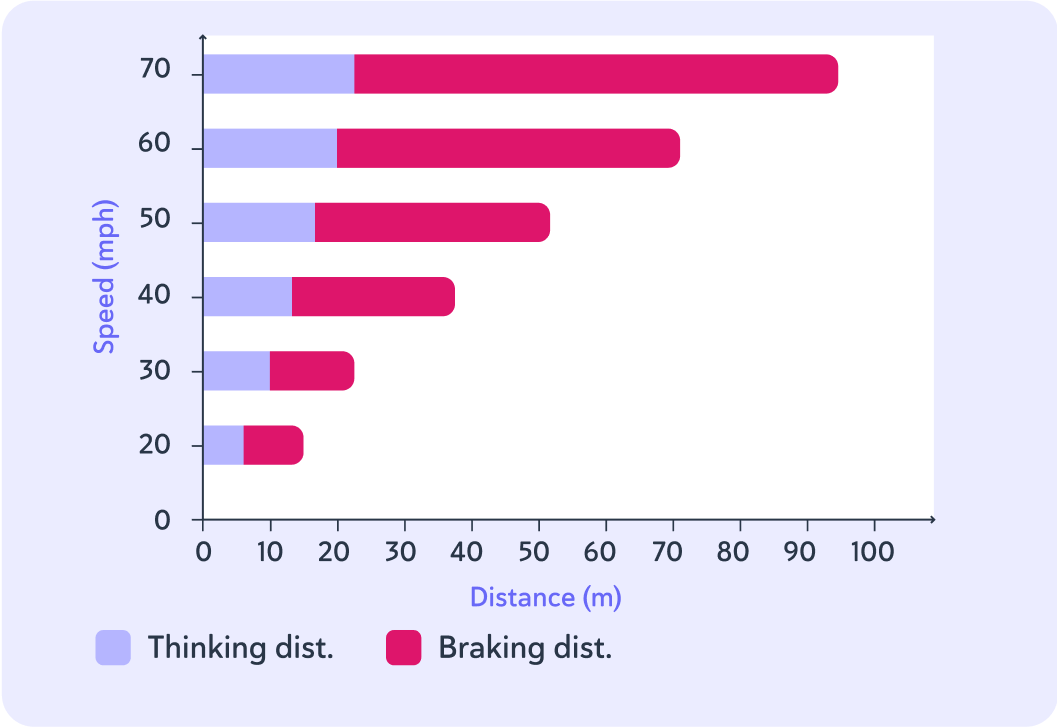YOU ARE LEARNING:
Braking Distance

Braking Distance
We will see in this lesson that the speed of the car and the environmental conditions can both affect the braking distance of a car.
If a driver notices a child on the road ahead, they need to stop as fast as they can. The distance it takes the car to stop is called the ...

A driver notices a child on the road ahead. They need to stop in the shortest distance possible. They react and apply the brakes. The distance it takes the car to stop from this point is called the ...

Braking distance is how far a vehicle travels under the braking force, once the brakes are applied. It is affected by many factors. If a driver is aware that there are conditions affecting his braking distance, he should drive accordingly.
Which conditions do you think might increase the braking distance of a vehicle?

You can select multiple answers
If the road surface is wet or icy, why might this increase braking distance?

When, other than in icy or wet conditions, might car tyres skid when the brakes are applied?

If a driver is making a journey in wet or icy conditions, which two things should he do to make his journey more safe?

You can select multiple answers
How does speed affect braking distance?
A driver is travelling at 30 mph and notices a child in the road ahead. He reacts and applies his brakes. What do you think might be a typical braking distance for a car travelling at 30 mph?
A) 5 metres B) 10 metres C) 14 metres
Answer A, B or C.

If the same driver were travelling at 60 mph his braking distance would be much further. Try to guess a typical braking distance at this speed.
A) 55 metres B) 30 metres C) 20 metres
Answer A, B or C.

The faster a vehicle is travelling, the greater its braking distance will be.
This is why adhering to speed limits is so important!
A car is travelling at 40 mph. The driver notices a hazard approximately 10 metres ahead of him in the road. He applies his brakes. Will the driver stop in time to avoid the hazard? Answer yes or no.


A car is travelling at 30 mph in icy conditions. The driver notices a hazard approximately 16 metres ahead of him in the road. He applies his brakes. Will the driver stop in time to avoid the hazard? Answer yes or no.


